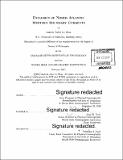| dc.contributor.advisor | John M. Toole. | en_US |
| dc.contributor.author | Le Bras, Isabela Astiz | en_US |
| dc.contributor.other | Woods Hole Oceanographic Institution. | en_US |
| dc.coverage.spatial | nl----- | en_US |
| dc.date.accessioned | 2017-05-12T19:00:56Z | |
| dc.date.available | 2017-05-12T19:00:56Z | |
| dc.date.copyright | 2017 | en_US |
| dc.date.issued | 2017 | en_US |
| dc.identifier.uri | http://hdl.handle.net/1721.1/109056 | |
| dc.description | Thesis: Ph. D., Joint Program in Physical Oceanography (Massachusetts Institute of Technology, Department of Earth, Atmospheric, and Planetary Sciences; and the Woods Hole Oceanographic Institution), 2017. | en_US |
| dc.description | Cataloged from PDF version of thesis. | en_US |
| dc.description | Includes bibliographical references (pages 163-174). | en_US |
| dc.description.abstract | The Gulf Stream and Deep Western Boundary Current (DWBC) shape the distribution of heat and carbon in the North Atlantic, with consequences for global climate. This thesis employs a combination of theory, observations and models to probe the dynamics of these two western boundary currents. First, to diagnose the dynamical balance of the Gulf Stream, a depth-averaged vorticity budget framework is developed. This framework is applied to observations and a state estimate in the subtropical North Atlantic. Budget terms indicate a primary balance of vorticity between wind stress forcing and dissipation, and that the Gulf Stream has a significant inertial component. The next chapter weighs in on an ongoing debate over how the deep ocean is filled with water from high latitude sources. Measurements of the DWBC at Line W, on the continental slope southeast of New England, reveal water mass changes that are consistent with changes in the Labrador Sea, one of the sources of deep water thousands of kilometers upstream. Coherent patterns of change are also found along the path of the DWBC. These changes are consistent with an advective-diffusive model, which is used to quantify transit time distributions between the Labrador Sea and Line W. Advection and stirring are both found to play leading order roles in the propagation of water mass anomalies in the DWBC. The final study brings the two currents together in a quasi-geostrophic process model, focusing on the interaction between the Gulf Stream's northern recirculation gyre and the continental slope along which the DWBC travels. We demonstrate that the continental slope restricts the extent of the recirculation gyre and alters its forcing mechanisms. The recirculation gyre can also merge with the DWBC at depth, and its adjustment is associated with eddy fluxes that stir the DWBC with the interior. This thesis provides a quantitative description of the structure of the overturning circulation in the western North Atlantic, which is an important step towards understanding its role in the climate system. | en_US |
| dc.description.statementofresponsibility | by Isabela Astiz Le Bras. | en_US |
| dc.format.extent | 174 pages | en_US |
| dc.language.iso | eng | en_US |
| dc.publisher | Massachusetts Institute of Technology | en_US |
| dc.rights | MIT theses are protected by copyright. They may be viewed, downloaded, or printed from this source but further reproduction or distribution in any format is prohibited without written permission. | en_US |
| dc.rights.uri | http://dspace.mit.edu/handle/1721.1/7582 | en_US |
| dc.subject | Joint Program in Physical Oceanography. | en_US |
| dc.subject | Earth, Atmospheric, and Planetary Sciences. | en_US |
| dc.subject | Woods Hole Oceanographic Institution. | en_US |
| dc.subject.lcsh | Ocean currents North Atlantic Ocean | en_US |
| dc.title | Dynamics of North Atlantic western boundary currents | en_US |
| dc.type | Thesis | en_US |
| dc.description.degree | Ph. D. | en_US |
| dc.contributor.department | Joint Program in Physical Oceanography | en_US |
| dc.contributor.department | Woods Hole Oceanographic Institution | en_US |
| dc.contributor.department | Massachusetts Institute of Technology. Department of Earth, Atmospheric, and Planetary Sciences | |
| dc.identifier.oclc | 986241321 | en_US |
